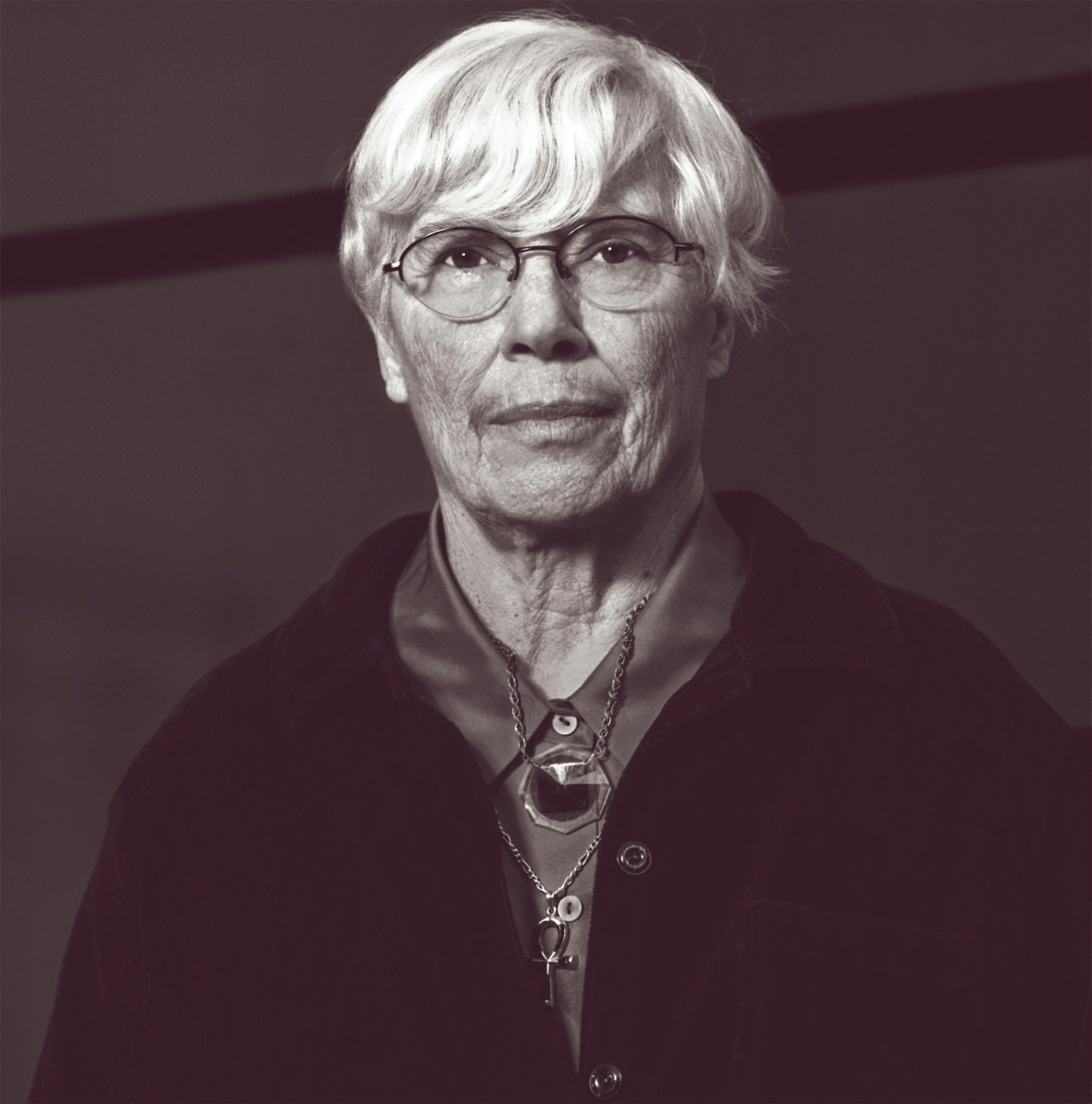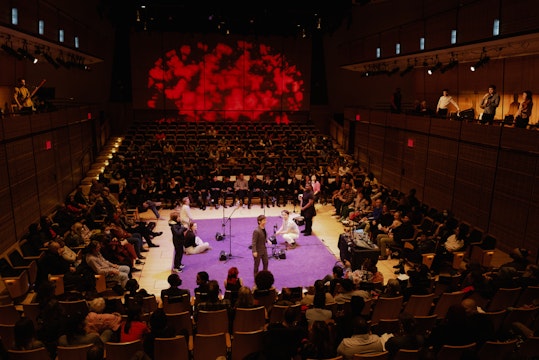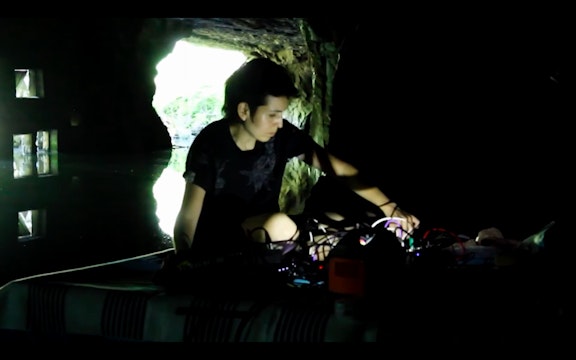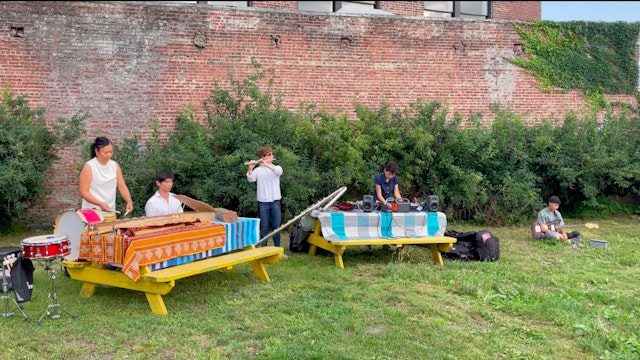The Witness by Pauline Oliveros
At the height of great unrest in the 1960s, legendary composer Pauline Oliveros retreated from public performing and dove into sound experiments meant to soothe and heal
At the height of great unrest in the 1960s, legendary composer Pauline Oliveros retreated from public performing and dove into sound experiments meant to soothe and heal
She later coined Deep Listening®, an embodied practice in which we intentionally and actively tune into, versus tune out, the sounds around and within us.
In 1989, Oliveros composed The Witness, three open strategies for listening, attuning, and responding to ourselves and to one another. The score, along with Oliveros’s philosophies of community and collaboration and the practice and process of Deep Listening®, have inspired a vast constellation of projects over the decades. The Witness score is both the seed of The Witness and the guiding principle around which its research projects are organized.
THE WITNESS
A Solo Duet with an Imaginary Partner, a Duo, or an Ensemble
COMMENTARY
The Witness may be performed by a soloist, as a duet with an imaginary partner, or as an ensemble for two to a hundred or more performers. If performed as a sound piece any instruments or voices capable of following the instructions may be used.
The structure of The Witness consists of three strategies for listening and responding with guidelines for the use of the strategies. The Witness lends itself well to movement and drama as well as music. It may be performed either as music, movement, or drama, or in any combination. If performed as movement or theater then movement or dramatic action is substituted for sound. Performers may use any medium exclusively or sound, movement and/or dramatic action in combination.
The performance could take place in a variety of performance situations including theaters, museums, alternative spaces, outdoor amphitheaters, or other outdoor locations. Performers could be close together or at long or changing distances from one another. They could be inside, surrounding, or moving through an audience. Appropriate spatial relationships are to be developed by the players during the performance through awareness of height, angle and distance and its effect on sound, movement and theatrical action.
STRATEGY I – ATTENTION TO ONESELF
Sound: Each sound should be only one sound with silence before and after. Each silence should be of a different duration. The sound can be longer, shorter, softer, louder, simpler or more complex but always different than any other sound. Each sound should be unique in every respect as if it were sculpted anew out of totally different material each time.
Movement: Each movement should be only one gesture whether it is done with the whole body, one joint or any other moveable body part. All the qualities of movement should be different every time. There should be stillness before and after the movement. Each stillness should be different from the duration of any other stillness.
Theater: Each dramatic action or statement should be totally different from any other with silence or stillness before and after. Each silence or stillness should be of different duration.
Attention: Attention is given exclusively to one's own performance no matter what the imaginary or real partner performs. The goal is for each performer to keep focus on the sound, movement or dramatic action to be performed.
STRATEGY II – ATTENTION TO OTHERS
Sound: Listen for a sound. React to the sound by anticipating or following pitch, timbre, rhythm and/or dynamics as instantaneously as possible. React spontaneously according to the past or future of a partner's playing. Try to gain leadership of the interaction through anticipating or intuiting what might be performed next.
Movement: Watch for a movement. React to the movement qualities by anticipating or following as instantaneously as possible. React spontaneously according to the past or future of a partner's movement. Try to gain leadership of the interaction through anticipating or intuiting a partner's next move.
Theater: Watch and listen for a dramatic action or statement. React by anticipating or following the nature of the action or statement. React spontaneously according to the past or future of a partner's movement. Try to gain leadership of the interaction through anticipating or intuiting the next situation.
Attention: Give maximum attention to a partner's performance regardless of what you are performing. The goal is to become like a witness to the totality of all the performance interactions as if the whole group and the environment was perceived as only one performer.
STRATEGY III — ATTENTION ALL OVER
All participants: Try to perform inside of the time, exactly with the time, or outside the time of a partner's performance sound, movement or dramatic action/statement.
Attention: Give equal attention to your own and a partner's performance, as if only one person were making all of the sounds, movements or actions. Expand your field of attention, as far as possible, to include any environmental sound, movement or dramatic action as part of this unity. Try to feel the past, present and future of the performance as unity.
THE USE OF STRATEGIES
Each performer begins with Strategy I independently and continues indefinitely until one performer begins to react to another and another becomes aware of the reactions and reciprocates. When Strategy II is fully established by consensus then Strategy III may begin. After all three strategies have been established and experienced by all of the performers, any of the three strategies may be used again at any time. Each performer is responsible in discriminating which strategy is in use at all times. The piece continues until all performers are silent or still.
Pauline Oliveros, September 1989
The Witness by Pauline Oliveros (1989) © 2013 Anthology of Text Scores Deep Listening Publications All Rights Reserved Special thanks_Permissions from: The Pauline Oliveros Trust
Photo: Four Méditations and Sound Geometries - Pauline Oliveros - Musiques Nouvelles SubRosa Records 2016




